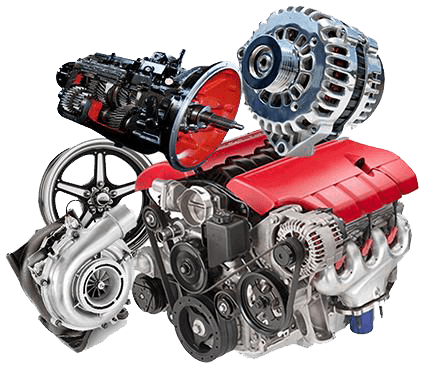Discovering the Inner Workings of a Compact Vehicle's Engine System
As drivers, we frequently take for approved the elaborate procedures that take place within the boundaries of our lorry's engine system. In this exploration of a small automobile's engine system, we will certainly decipher the internal workings of this mechanical symphony, losing light on the secrets that drive us onward on our day-to-day trips.
Burning Refine Summary
The combustion procedure in a compact lorry's engine system is a crucial system that successfully transforms fuel right into energy to power the car. This procedure happens within the combustion chamber of the engine, where gas and air mix, ignite, and produce regulated surges. The combustion process includes four major phases: intake, compression, power, and exhaust.
Throughout the intake stage, the piston relocates downward, reeling in a blend of air and gas right into the combustion chamber. The following phase, compression, involves the piston relocating upward, pressing the air-fuel mixture to enhance its strength. Subsequently, in the power phase, the ignition system stirs up the pressed mix, leading to a fast expansion of gases that compels the piston pull back. This down movement generates the power required to drive the automobile. Ultimately, in the exhaust stage, the burned gases are gotten rid of from the burning chamber through the exhaust shutoff, preparing the chamber for the next cycle. This cyclic burning process is basic to the operation of a compact car's engine system, making certain effective power conversion for propulsion.
Piston and Cyndrical Tube Communication

The piston's exact fit within the cylinder is vital for maintaining optimum compression and stopping energy loss during burning. Tight clearances between the piston and cylinder wall surfaces ensure efficient securing, enabling the piston to move smoothly without enabling gases to leakage past. Appropriate lubrication is also crucial to decrease friction and use in between these elements, enhancing long life and performance.
Additionally, the style and products utilized in producing the piston and cylinder influence engine performance and sturdiness. Modern engines typically utilize light-weight yet resilient products like light weight aluminum alloys for pistons and cyndrical tube liners to reduce inertia and boost thermal efficiency. Overall, the unified interaction in between the piston and cyndrical tube is fundamental to the engine's capability and overall performance.
Gas Injection System Performance
Gas shot systems in portable car engines play a crucial duty in exactly providing gas to the burning chamber for reliable and regulated ignition. The gas shot system functions by infusing fuel right into the burning chamber at the ideal minute throughout the engine's operation (opel corsa engine). This specific timing ensures that the fuel mixes uniformly with the air for appropriate burning, resulting in boosted fuel performance and decreased emissions
There are mostly two sorts of gas shot systems utilized in portable automobile engines: port gas shot (PFI) and direct fuel shot (DFI) PFI systems infuse fuel right into the consumption port before the consumption valve, while DFI systems infuse fuel straight right into the burning chamber. Both systems have their benefits, with DFI providing far better fuel atomization and PFI giving a much more cost-efficient service.
Recognizing Engine Air Conditioning Mechanisms
Effective operation of a compact automobile's engine depends heavily on the efficiency of its cooling mechanisms. The cooling system in a small automobile usually is composed of several components working with each other to control the engine temperature level. Recognizing these engine cooling devices is vital for keeping the efficiency and long life of a small automobile's engine system.

Exhaust System Components Explained
The optimum functioning of a portable car's engine air conditioning systems depends on a complementary system understood as the exhaust system, which consists of different essential elements for ensuring effective emissions and engine efficiency. go to this web-site The exhaust manifold gathers exhaust gases from the engine's cylinders and paths them to the catalytic converter.
One crucial element of the exhaust system is the oxygen sensing unit, which monitors the oxygen levels in the exhaust gases to aid control fuel usage and ensure optimum engine performance. opel corsa engine. Furthermore, the resonator might exist in some exhaust systems to reduce noise degrees. Generally, the exhaust system plays a vital role in keeping engine performance, lowering damaging discharges, and making sure a quieter driving experience for small vehicle owners

Conclusion
To conclude, the compact lorry's engine system is a complex mix of elements that interact to facilitate the combustion procedure, transform fuel into energy, and remove waste gases. Recognizing the inner functions of the engine Going Here system, consisting of the piston and cyndrical tube interaction, gas injection system, engine cooling devices, and exhaust system components, is important for keeping optimum efficiency and performance of the vehicle.
The combustion process in a compact vehicle's engine system is a crucial system that effectively transforms fuel into energy to power the pop over to this site car.Fuel injection systems in small lorry engines play an important role in exactly providing fuel to the combustion chamber for efficient and controlled ignition.There are primarily two kinds of gas injection systems utilized in compact vehicle engines: port gas shot (PFI) and direct fuel injection (DFI) Comprehending these engine air conditioning mechanisms is crucial for keeping the efficiency and durability of a compact automobile's engine system.
The optimal functioning of a small lorry's engine air conditioning systems depends on a complementary system known as the exhaust system, which consists of different vital elements for guaranteeing efficient emissions and engine performance.